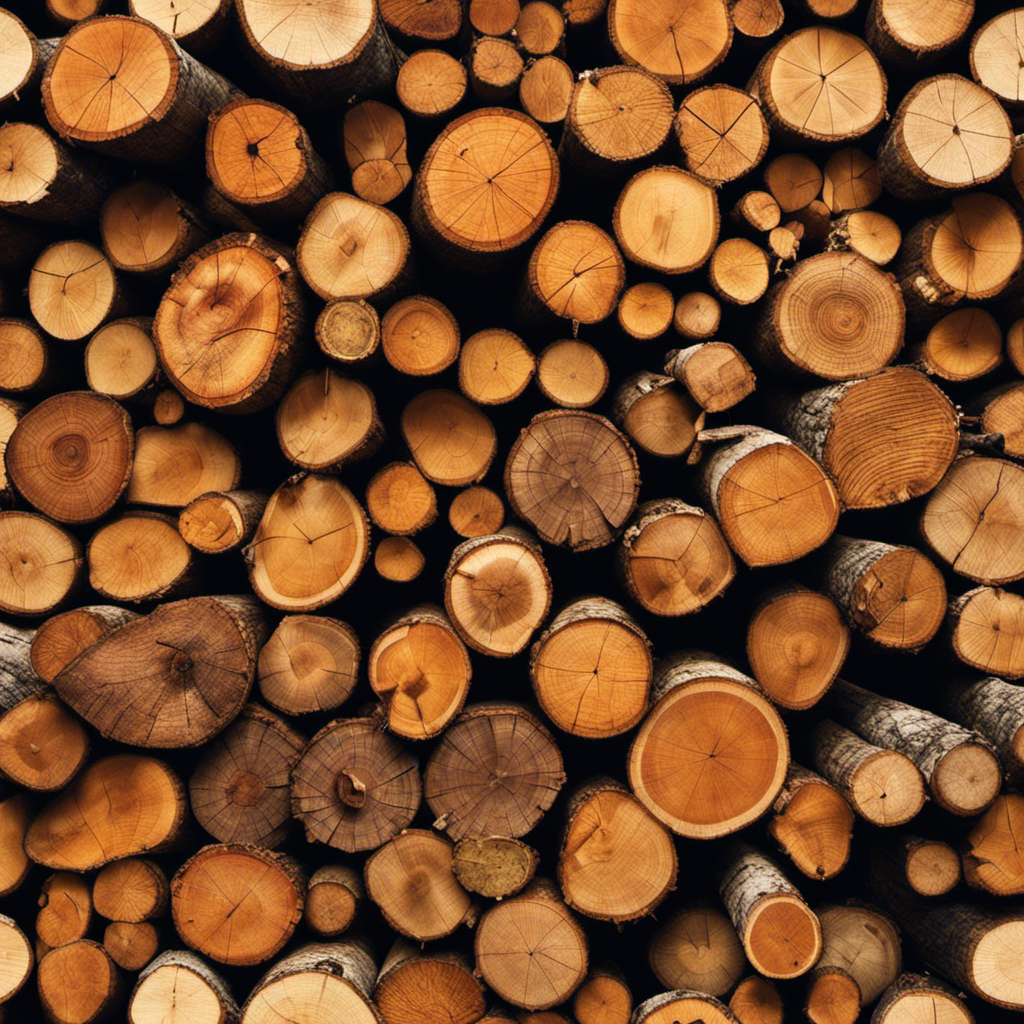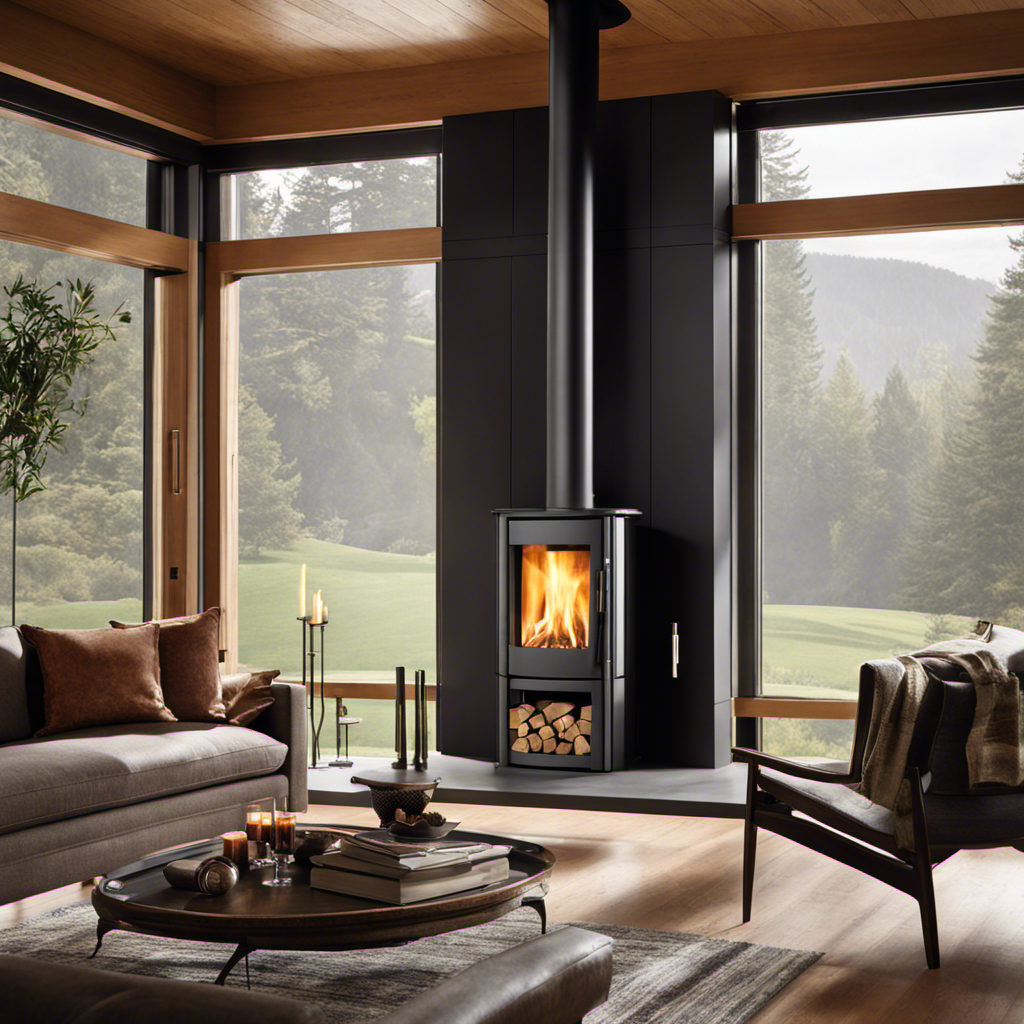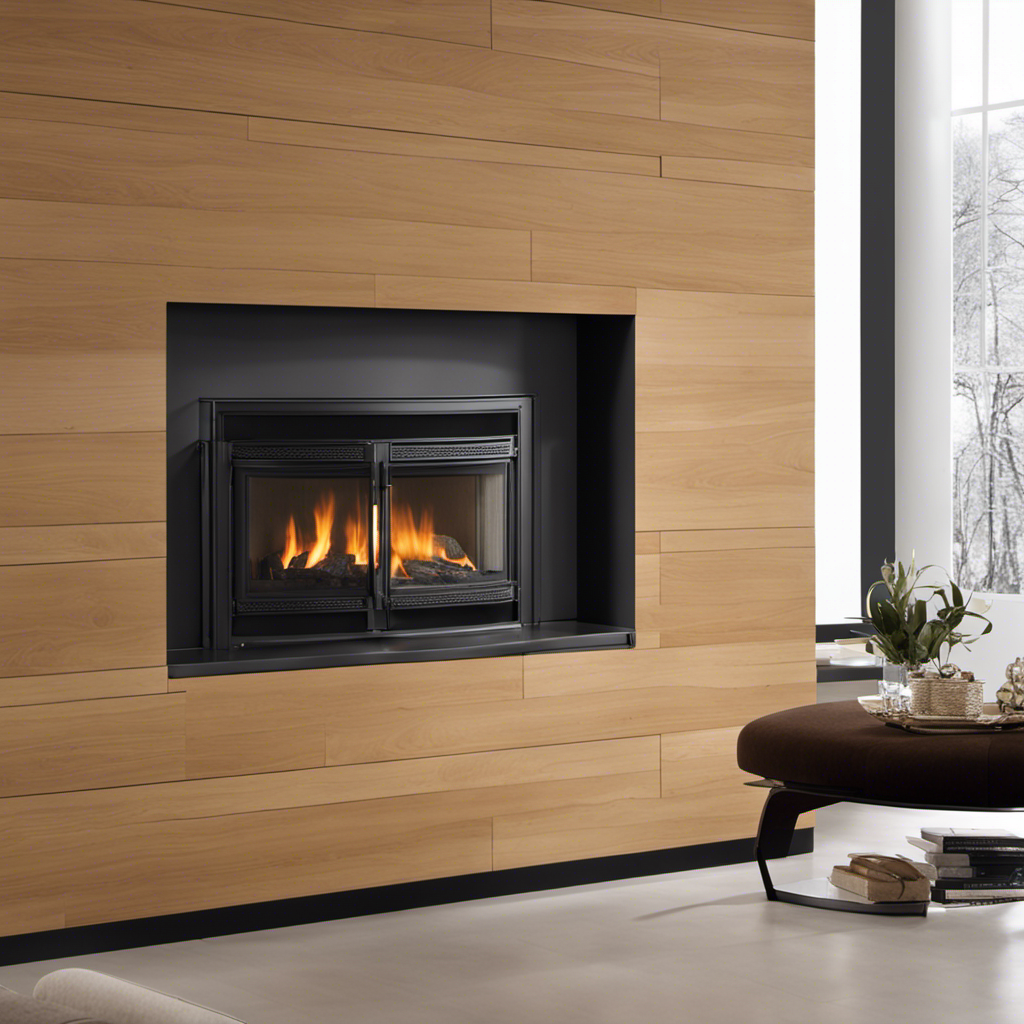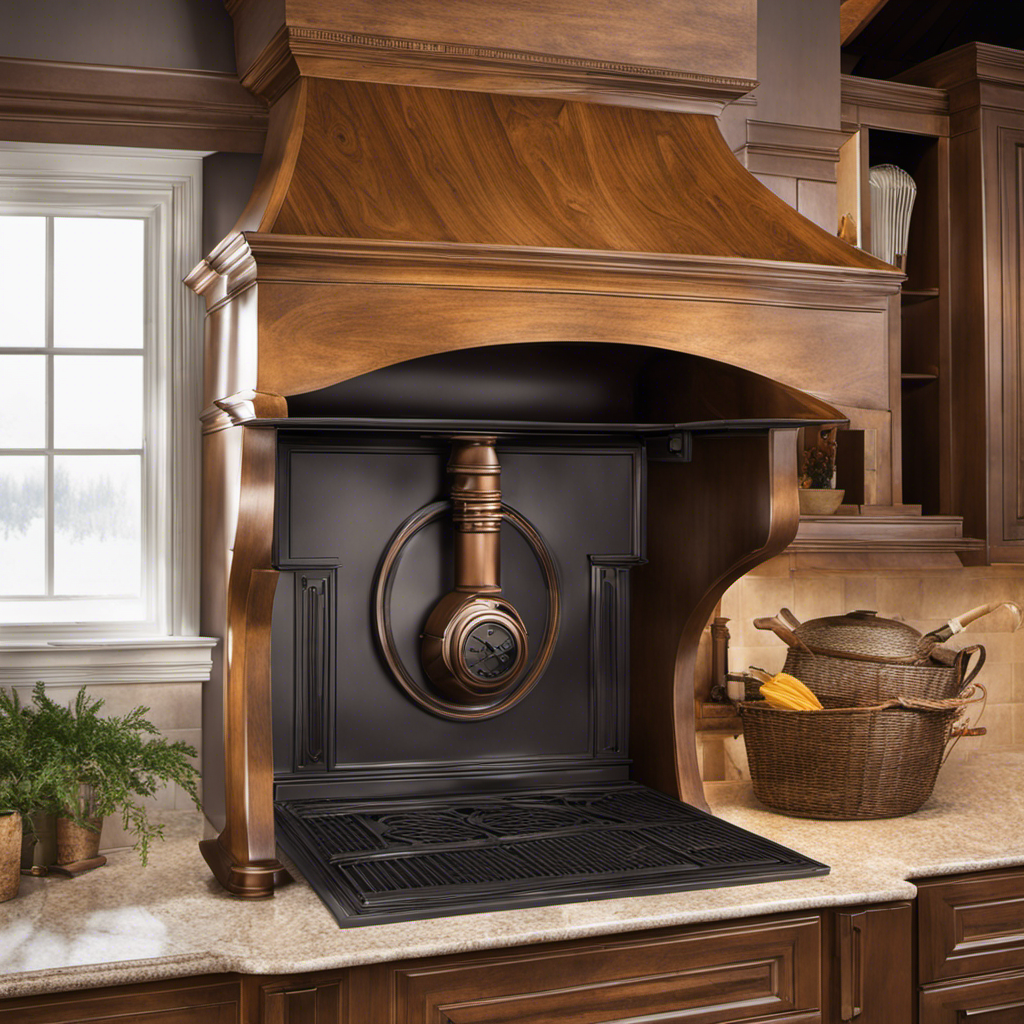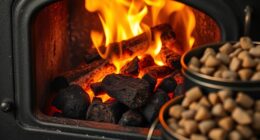As someone experienced in using wood-burning stoves, I understand the significance of selecting the right type of firewood to create a cozy fire. The ongoing dilemma remains: which type of wood is truly the best?
Let’s dive into the world of firewood and explore the best options for your wood stove. From the sizzling heat of hardwoods to the quick-burning softwoods, we’ll uncover the secrets to a warm and inviting home.
Get ready to stoke the flames and discover the perfect firewood for your wood stove.
Key Takeaways
- Properly season firewood to ensure moisture content below 20%
- Choose high BTU firewood for maximum heat output and efficiency
- Birch and oak are optimal wood species for wood stoves due to their hardwood nature
- Store firewood in a dry and well-ventilated area for at least six months to a year before use
Factors to Consider When Choosing Firewood for a Wood Stove
I need to consider the factors when choosing the firewood for my wood stove.
One important factor is firewood storage. It’s crucial to store firewood in a dry and well-ventilated area to prevent it from absorbing moisture, which can make it difficult to burn.
Another factor to consider is the firewood cutting techniques. It’s essential to cut firewood to the proper size for your wood stove. The recommended length is around 16 to 18 inches, as this allows for efficient and effective burning. Additionally, it’s important to split the firewood into smaller pieces to increase the surface area, promoting better airflow and faster ignition.
Hardwood Vs. Softwood: Which Is the Best Firewood for a Wood Stove
During my research, I’ve discovered that hardwood is typically preferred over softwood when it comes to choosing the best firewood for a wood stove. Hardwood, such as oak, maple, or birch, has a higher wood density compared to softwood, like pine or spruce. This higher wood density leads to a longer burn time and more heat output, making hardwood a more efficient choice for heating purposes. In fact, hardwood has a higher combustion efficiency, meaning it produces more heat with less smoke and ash. To illustrate this point, here is a table highlighting the wood density and combustion efficiency of different types of firewood:
| Type of Firewood | Wood Density (lbs/ft³) | Combustion Efficiency |
|---|---|---|
| Oak | 47-50 | High |
| Pine | 25-28 | Medium |
| Maple | 45-50 | High |
| Spruce | 23-29 | Low |
Considering the importance of wood density and combustion efficiency, it is clear that hardwood is the ideal choice for burning in a wood stove. However, another crucial factor to consider when selecting firewood is the moisture content, which I will discuss in the next section.
The Importance of Moisture Content in Firewood Selection
Properly seasoned firewood, with a moisture content below 20%, is essential for efficient and clean burning. The seasoning process is crucial in achieving optimal burning efficiency.
To properly dry firewood, it should be split and stacked in a way that allows air circulation. This promotes the evaporation of moisture, reducing the overall moisture content. It’s important to store the wood in a dry area, protected from rain or snow.
Additionally, moisture meters are valuable tools for accurately measuring the moisture content in firewood. These devices provide instant readings, allowing you to select wood with the ideal moisture level. By using a moisture meter, you can ensure that the firewood you choose is properly seasoned, resulting in cleaner and more efficient burning.
High BTU Firewood: Maximizing Heat Output in Your Wood Stove
Using high BTU firewood in my wood stove maximizes the heat output and keeps my home warm and cozy. High BTU firewood refers to wood with a high heat value, which provides more energy when burned.
To ensure maximum heat output, it’s essential to properly store and maintain the firewood. Firewood storage tips include keeping the wood dry and ready to burn. This can be achieved by storing the firewood in a well-ventilated area, away from moisture and direct contact with the ground. It’s also crucial to stack the firewood properly, allowing for proper airflow and preventing mold or rot.
Additionally, using high BTU firewood has a positive environmental impact. When burned efficiently, it produces less smoke and releases fewer pollutants into the air compared to lower quality firewood. This helps to reduce air pollution and promote cleaner air quality in our communities.
Exploring Different Wood Species for Optimal Wood Stove Performance
I’ve been testing various wood species, and I’ve found that birch and oak provide optimal performance for my wood stove. When it comes to the environmental impact, it’s important to consider the sustainability of different wood species for wood stove use. Birch and oak are both hardwoods, which means they burn hotter and longer compared to softwoods like pine. This not only maximizes heat output but also reduces the amount of wood needed, making it more sustainable in the long run.
In addition to choosing the right wood species, the seasoning process is crucial for properly drying and preparing firewood for optimal wood stove performance. It’s recommended to cut and split the wood to allow for better air circulation and faster drying. The wood should be stacked in a dry, well-ventilated area and left to season for at least six months to a year. This ensures that the wood has a low moisture content, which improves its combustion efficiency and reduces creosote buildup in the chimney.
Frequently Asked Questions
How Often Should I Clean My Wood Stove to Maintain Its Efficiency?
To maintain its efficiency, I clean my wood stove every 1-2 weeks. I remove ash, clean the glass, and check for any build-up in the flue. Regular cleaning and proper maintenance help maximize heat output.
Can I Burn Treated or Painted Wood in a Wood Stove?
Burning treated wood in a wood stove can release harmful chemicals into the air, posing a risk to your health. Additionally, burning painted wood can release toxic fumes and damage your stove. It’s best to stick to untreated, dry firewood.
Is It Safe to Leave a Wood Stove Unattended Overnight?
Leaving a wood stove unattended overnight is not safe. It can lead to potential fire hazards and carbon monoxide buildup. To properly maintain a wood stove for optimal efficiency, regularly clean and inspect it.
Can I Use Wood Pellets as a Fuel Source in a Wood Stove?
Using wood pellets in a wood stove for fuel has both pros and cons. They produce less ash and are more efficient, but they can be more expensive and may require a special pellet stove.
Are There Any Firewood Alternatives That Can Be Used in a Wood Stove?
As an expert in wood stoves, I’ve explored firewood alternatives extensively. Fire bricks can be used, but they have pros and cons. Compressed sawdust logs, on the other hand, offer many benefits. Let’s dive into the details.
Conclusion
After considering the factors, it’s clear that hardwood is the best firewood for a wood stove. Its density and low moisture content make it burn longer and produce more heat.
The type of wood species also plays a role in maximizing wood stove performance. By selecting the right firewood, you can ensure optimal heat output and an efficient wood stove experience.
So, choose wisely and enjoy cozy fires that keep you warm throughout the winter.
Growing up surrounded by the vast beauty of nature, Sierra was always drawn to the call of the wild. While others sought the comfort of the familiar, she ventured out, embracing the unpredictable and finding stories in the heartbeat of nature.
At the epicenter of every remarkable venture lies a dynamic team—a fusion of diverse talents, visions, and passions. The essence of Best Small Wood Stoves is crafted and refined by such a trio: Sierra, Logan, and Terra. Their collective expertise has transformed the platform into a leading authority on small wood stoves, radiating warmth and knowledge in equal measure.

